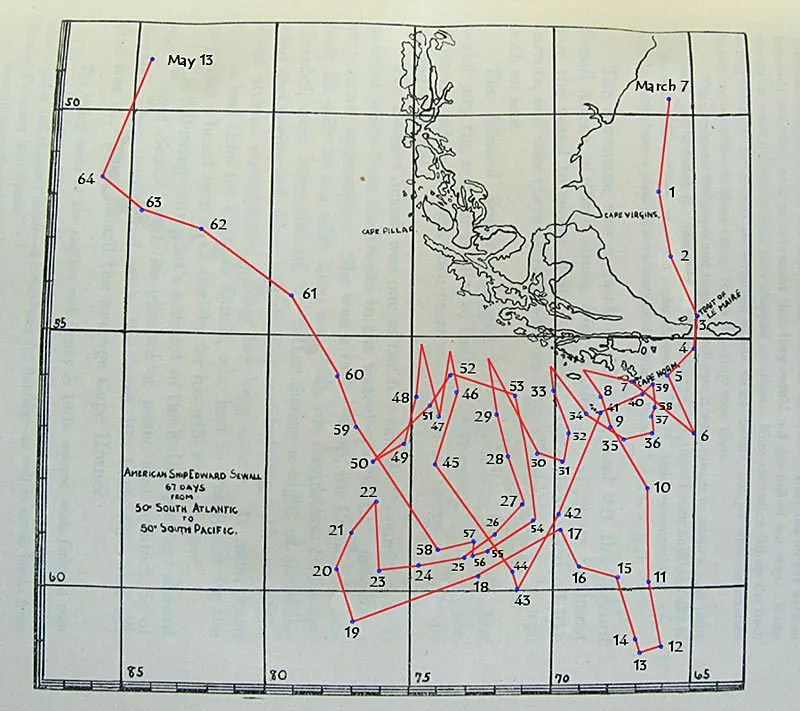Absolutely, but I’m not so sure that when you want to go 3150 nautical miles to the ENE, it’s better to sail 800 miles due south just to catch the trade winds, and then work yourself 800 miles north again.
Edit: A bit of googling says that the Gulf Stream current was a much bigger deal than the prevailing winds were- apparently the eastbound route was further north than you’d think, in order to take advantage of it. And similarly, the westbound route was further south as well.
Here’s an excerpt from a naval history board post that explains it:
WEST-BOUND ROUTES
By far the principal “all season” west-bound route from NW European ports to the Atlantic coast of North America was the “Southern Route” via the English Channel, then SW past the Azores. At about 20degN latitude the route turned W, ultimately veering to the NW or northerly, depending upon which port in the Savannah-Halifax range was the intended destination.
There were two other routes available. In the months of autumn, a “Northern Route” became a possible option, whereby ships would pass to the west of the British Isles, heading for a position approximately 55degN lat / 30degW long, then heading WSW for the Quebex-Halifax range of ports. On rare occasions, it was actually possible to make almost a direct voyage from the SW tip of Ireland to Boston or Newport. Ships following this rare route, but headed for ports in the New York-Baltimore range would veer to the SW about mid-ocean, pass near Bermuda, then approach destination from the SE in order to avoid fighting the powerful Gulf Stream.
EAST-BOUND ROUTES
The route back to Europe followed the ENE flow of the Gulf Stream up the North American coast past Halifax and St John’s, then across the North Atlantic to a landfall off Cornwall or the SW tip of Ireland. Ships tended to make a slightly more southerly crossing in spring and summer in order to avoid the very dangerous threat of icebergs.
EAST BOUND TRANSIT TIMES
“Ocean Passages for the World - Third Edition 1973” (which cites sailing records of Messrs Hardie and Company of Glasgow, Scotland) mentions typical passage times from New York to the English Channel “for a well-found sailing vessel of about 2000 tons” as approximately 25 to 30 days, with ships logging 100-150 miles per day on average. Judging from the size of ship described, these data probably refer to mid 19th C to early 20th C. “Harbors & High Seas” by Dean King & John B Hattendorf (which cites “Square Riggers on Schedule”, Princeton Univ Press, 1938) gives the following New York to Liverpool passage times for North Atlantic sailing packets in the period 1818-1832 as follows: fastest crossing - 21 days; slowest crossing -29 days. With an average distance of approx 3,000 miles, this equates to a range of about 100 to 140 miles per day, or an average speed over the ground of about 4 to 6 knots.
